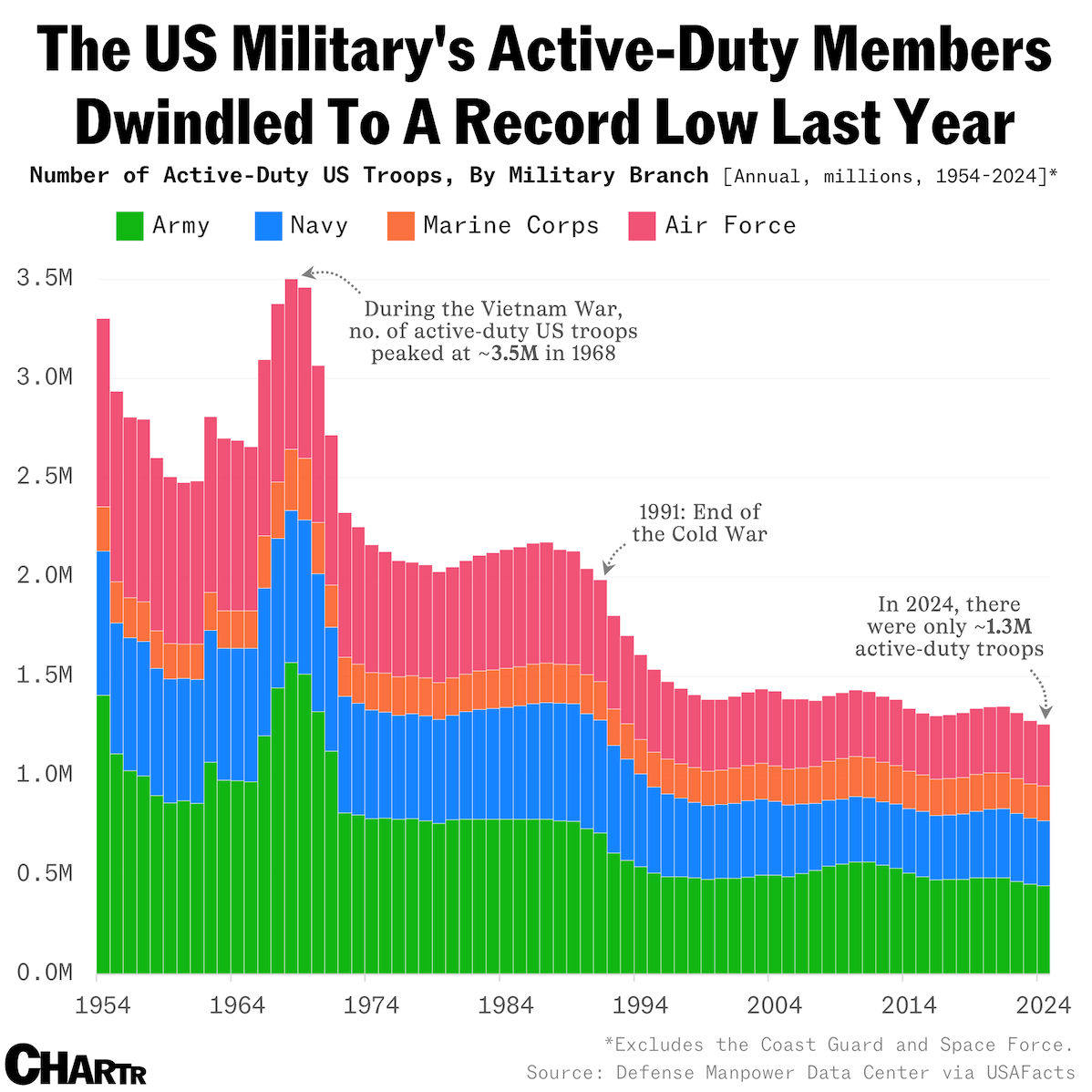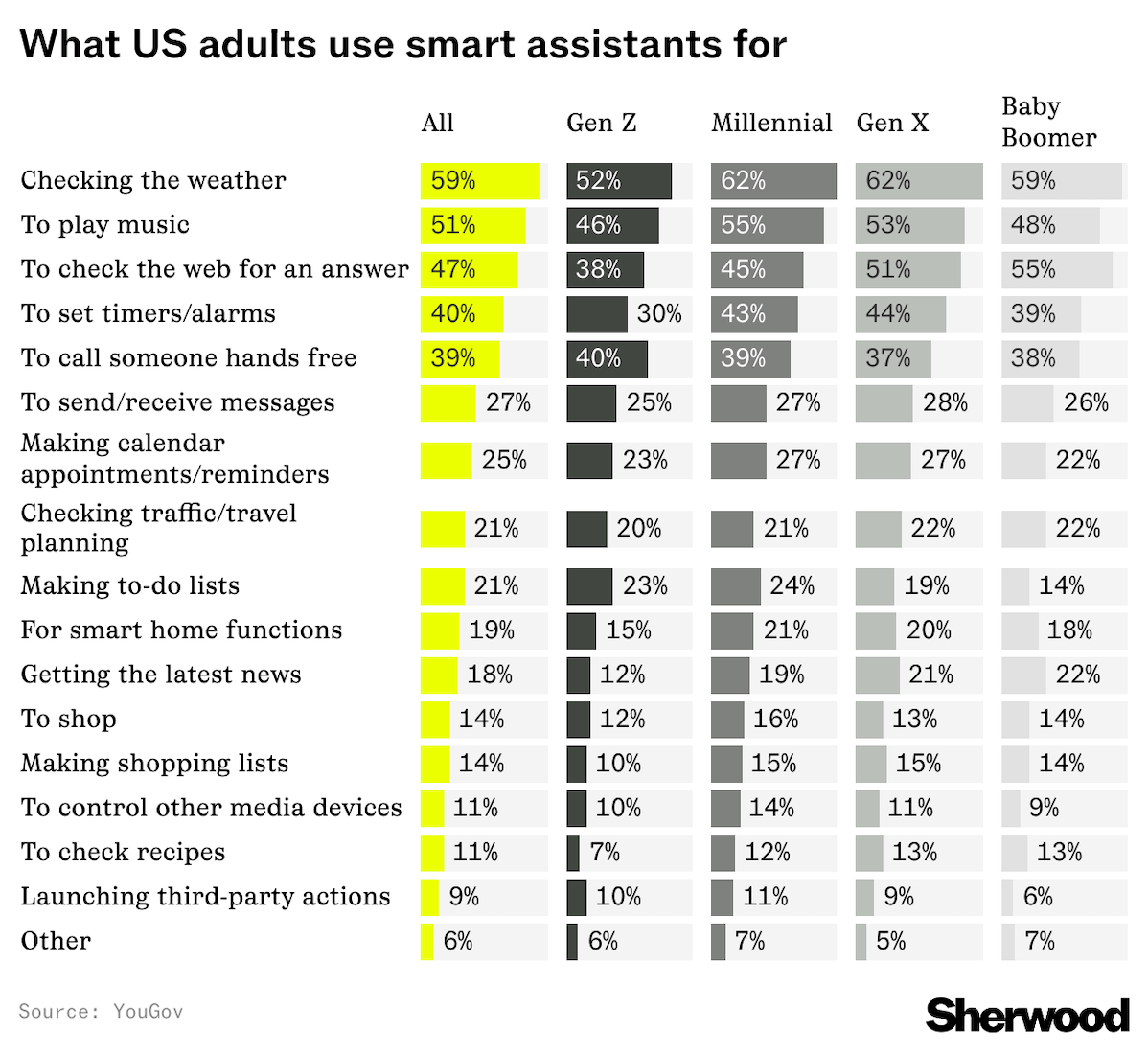Happy Sunday! Well, after one of the biggest players in the artificial intelligence arena, Meta, was reported to be looking to cut its AI team and freeze hiring, it wasn't exactly a great week for the tech… or the companies who reference AI in their names. Maybe Nvidia earnings on Wednesday might herald a brighter week ahead. Today we're looking at how the US army is using influencers for recruitment and what we're still asking smart assistants almost 10 years later. |
Have feedback for us? Just hit reply - we'd love to hear from you! |
The face of advertising has transformed almost inconceivably since the first US military recruitment campaigns began cropping up on radio, film, and print media at the start of the 20th century. In the decades that followed, the military has had to find new and different ways of marketing joining the forces to a rapidly modernizing demographic of young people. But recently, the US military has been facing a recruitment crisis. Last year, the total number of active-duty troops across the major branches of the US military was reported to be a record low of ~1.3 million, according to defense data cited by USAFacts — down more than 60% from the ~3.5 million peak seen in 1968. |
However, in March, the US military said it was already tracking strong recruiting figures across the services in 2025, with the Army having signed up ~73% of its goal in the first five months of the recruiting year. Google Trends data also shows that searches related to perks that come with joining the military, like salary and benefits, have all reached relative highs in the past few months. So, where did this sudden surge in service interest come from? New government aside, it's hard to ignore the fact that young Americans are entering the workforce at a tough time: the unemployment rate for those aged 18 to 19 has climbed to 15.6% in July, its highest level since 2020 and a rate that's 3.7x the national average. But it's also no coincidence that this spike in interest has occurred at the same time that the US military has started to warm up to social media — in particular, utilizing it to communicate with (and potentially recruit) a younger audience. Indeed, it now appears that the US Army is financing paid partnerships with influencers as a way to tap into their fan bases. |
|
|
Other great stories from the week |
|
|
Google, Amazon, and Apple are all upgrading their digital assistants — Assistant, Alexa, and Siri — to use more advanced generative-AI technology. The problem has been that even as they promise new and better capabilities, these tools for now have lost some of their initial functionality, and companies are struggling to make everything work as advertised. So far, the changes haven't meant much to regular users. New data from survey company YouGov shows that for the most part, people still mainly use smart/voice/digital assistants for the same stuff they did when these companies first demoed them about a decade ago: checking the weather, playing music, and setting timers. There's slight variation by age group, but the overall pattern holds. |
|
|
Not a subscriber? Sign up for free below. |
Sherwood Media, LLC produces fresh and unique perspectives on topical financial news and is a fully owned subsidiary of Robinhood Markets, Inc., and any views expressed here do not necessarily reflect the views of any other Robinhood affiliate... See more |
|
|
|





No comments:
Post a Comment